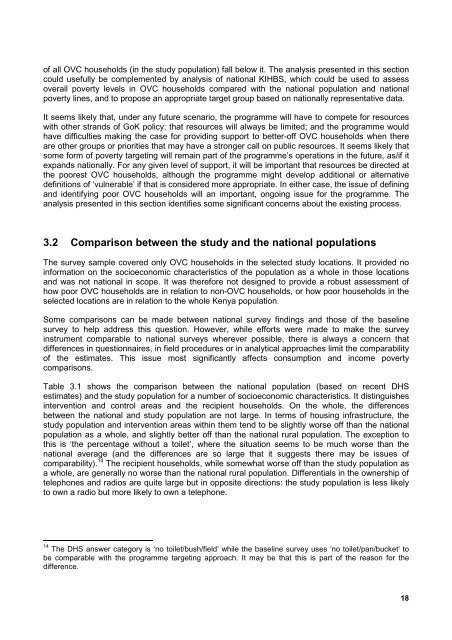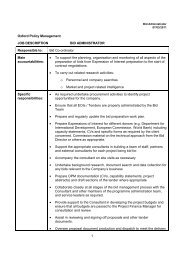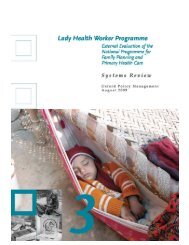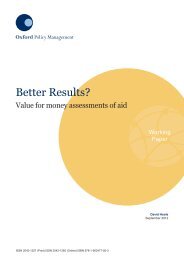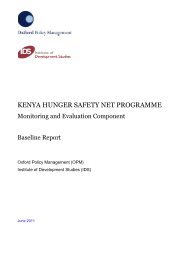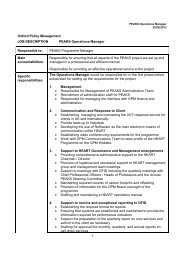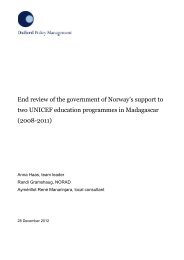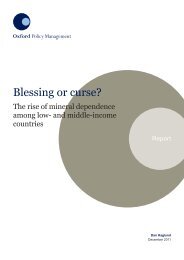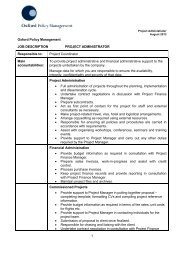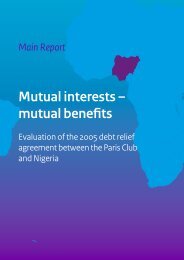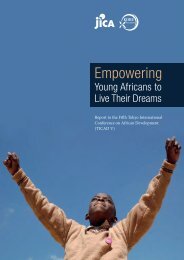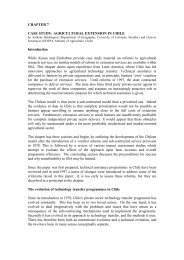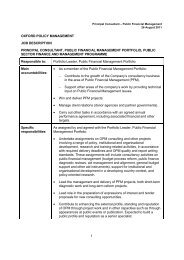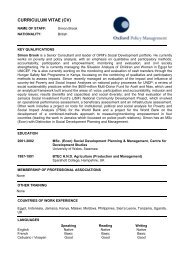Kenya OVC-CT Programme Operational and Impact Evaluation
Kenya OVC-CT Programme Operational and Impact Evaluation
Kenya OVC-CT Programme Operational and Impact Evaluation
Create successful ePaper yourself
Turn your PDF publications into a flip-book with our unique Google optimized e-Paper software.
of all <strong>OVC</strong> households (in the study population) fall below it. The analysis presented in this sectioncould usefully be complemented by analysis of national KIHBS, which could be used to assessoverall poverty levels in <strong>OVC</strong> households compared with the national population <strong>and</strong> nationalpoverty lines, <strong>and</strong> to propose an appropriate target group based on nationally representative data.It seems likely that, under any future scenario, the programme will have to compete for resourceswith other str<strong>and</strong>s of GoK policy; that resources will always be limited; <strong>and</strong> the programme wouldhave difficulties making the case for providing support to better-off <strong>OVC</strong> households when thereare other groups or priorities that may have a stronger call on public resources. It seems likely thatsome form of poverty targeting will remain part of the programme’s operations in the future, as/if itexp<strong>and</strong>s nationally. For any given level of support, it will be important that resources be directed atthe poorest <strong>OVC</strong> households, although the programme might develop additional or alternativedefinitions of ‘vulnerable’ if that is considered more appropriate. In either case, the issue of defining<strong>and</strong> identifying poor <strong>OVC</strong> households will an important, ongoing issue for the programme. Theanalysis presented in this section identifies some significant concerns about the existing process.3.2 Comparison between the study <strong>and</strong> the national populationsThe survey sample covered only <strong>OVC</strong> households in the selected study locations. It provided noinformation on the socioeconomic characteristics of the population as a whole in those locations<strong>and</strong> was not national in scope. It was therefore not designed to provide a robust assessment ofhow poor <strong>OVC</strong> households are in relation to non-<strong>OVC</strong> households, or how poor households in theselected locations are in relation to the whole <strong>Kenya</strong> population.Some comparisons can be made between national survey findings <strong>and</strong> those of the baselinesurvey to help address this question. However, while efforts were made to make the surveyinstrument comparable to national surveys wherever possible, there is always a concern thatdifferences in questionnaires, in field procedures or in analytical approaches limit the comparabilityof the estimates. This issue most significantly affects consumption <strong>and</strong> income povertycomparisons.Table 3.1 shows the comparison between the national population (based on recent DHSestimates) <strong>and</strong> the study population for a number of socioeconomic characteristics. It distinguishesintervention <strong>and</strong> control areas <strong>and</strong> the recipient households. On the whole, the differencesbetween the national <strong>and</strong> study population are not large. In terms of housing infrastructure, thestudy population <strong>and</strong> intervention areas within them tend to be slightly worse off than the nationalpopulation as a whole, <strong>and</strong> slightly better off than the national rural population. The exception tothis is ‘the percentage without a toilet’, where the situation seems to be much worse than thenational average (<strong>and</strong> the differences are so large that it suggests there may be issues ofcomparability). 14 The recipient households, while somewhat worse off than the study population asa whole, are generally no worse than the national rural population. Differentials in the ownership oftelephones <strong>and</strong> radios are quite large but in opposite directions: the study population is less likelyto own a radio but more likely to own a telephone.14 The DHS answer category is ‘no toilet/bush/field’ while the baseline survey uses ‘no toilet/pan/bucket’ tobe comparable with the programme targeting approach. It may be that this is part of the reason for thedifference.18


